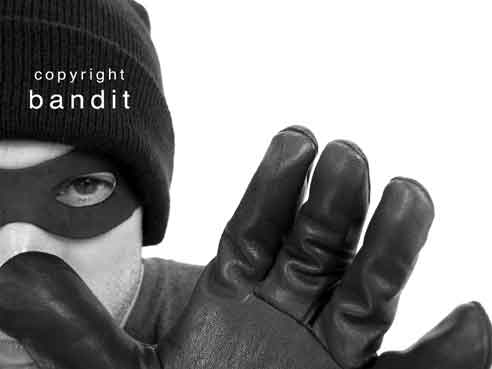 Fair or Foul:
Fair or Foul:
Using Another's Work
by Jon Lee Anderson
Here's a question I am asked frequently, both at home and in the office: Can I use something
someone else wrote, painted, composed, etc., in something I'm doing?
And what's more, whoever's asking always amends their inquiry with,
"And how much can I use without expecting the copyright police at my door?"
Well, the law involved is of the copyright variety, and the simple answer is usually,
"Without permission, NONE."
There are, however, as always, exceptions to this emphatic answer. The first regards whether the material is in the public domain, in which case it can be used freely. And the second concerns whether the inclusion would qualify as "fair use" under the copyright laws.
This article is devoted to this second exception.
Fair use is a legitimate defense to a claim of copyright infringement. It is designed to allow
broadcasters, researchers, scholars, and others similarly situated to use otherwise protected works without permission.
In my case, my wife is a teacher and she frequently seeks to use bits of material from newspapers and television to supplement her classroom presentations. Since she only uses the material for one or two classes and then discards it, this qualifies as fair use. It might be different if she were, say,
trying to copy large segments of newspapers or programs, and were to continue to use them for
an extended period of time. But she's not. So it's fair.
Although just what constitutes fair use is not easy to identify, here are some factors that go
into analyzing whether copying and use without permission will meet the standard:
First: Is the purpose and character of the use commercial or non-commercial?
In the case of teaching, research, criticism and other somewhat scholarly pursuits,
fair use is generally favored. And although the sale of newspapers, as well as the
advertising in them and on television, are certainly commercial enterprises,
news reporting is also favored in fair use questions.
The further you stray from these traditional uses, however, the riskier it becomes. Probably
the most interesting cases in the commercial field arise when parody is the central goal.
Generally categorized under the criticism heading, it has produced some ferocious
litigation in the past — lawsuits that were based more on emotion than on economics.
In these cases, be aware also that even when the copier is a non-profit institution, insulation from infringement claims is not automatic.
Second: What is the nature of the work? Factors a court examines in considering this issue are whether the copied work is heavily fact-based, whether it's visual as opposed to literary, and whether it has been published.
Works that are largely fact-based may enjoy a little less protection than other more general works,
but only because there is usually a limited way to express such material. Visual works, on the
other hand, receive more protection because of the almost infinite ways of presentation.
Third: What is the amount and importance of the copied material in relation to the work as a whole? This is the "heart of the matter" concept. The interesting dichotomy here is that in true criticism and scholarly works, quoting the heart of the work is generally very important, and is considered
appropriate fair use; while in commercial or other contexts, copying the heart of a work makes
a finding of fair use less likely.
Fourth: What is the effect of the copying on the potential market value of the copyrighted work?
For many judges, and certainly for most plaintiffs, this is probably the essence of the matter.
If the copying really does not reduce the market value of the work, then it is more likely to be
considered a fair use.
In some cases the copying actually enhances the value, by increasing public awareness of a work. So this often becomes a "no harm, no foul" issue. This element is one reason that copying from unpublished material (which has unknown potential value) may be more risky than copying from published works, which may have demonstrated that they have limited or little commercial worth.
Another interesting consideration here is whether there will be competition between the original and the copied works. If so, then qualifying as a fair use is less likely, since the probability of
reducing the value of the original increases.
As you can see, a fair use determination is essentially a balancing act,
a consideration of the interests of both parties. In summary:
In parody, the work that is used
Leaves the author less than amused.
But the fair use exception
Protects the production
'Cause the law says the copy's excused.
© May, 2004 Jon Lee Andersen



